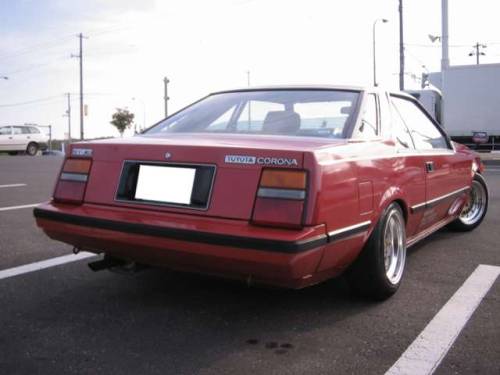
The car won the round and helped secure the championship. In 1984 Peter Glover borrowed a Cheetah mk7 powered by Toyota 2T for one round. The 1979 championship was won by a Toyota 2T powered Cheetah mk6. This engine was also commonly used in Australian Formula Two race cars during the 1970s and 1980s, where they typically made between 180 and 200 hp (149 kW 203 PS). The 2T-J, for commercial vehicles with less restrictive emissions standards, produces 93 PS (68 kW 92 hp) at 6000 rpm and 13.1 kg⋅m (128 N⋅m 95 lbf⋅ft) at 3800 rpm. Output for the early 2T-C bigport design is 102 hp (76 kW 103 PS) which is also due to different SAE testing methods, while the later version is 75 hp (56 kW 76 PS) at 5200 rpm and 116 N⋅m (86 lb⋅ft) at 3800 rpm, compression at 9.0:1.
1982 TOYOTA CORONA MANUAL
The 2T engines are usually coupled with either a T40 4 speed/T50 5 speed manual transmission, or an A40 3 speed automatic transmission. 1977–1979 Toyota Carina Van TA16V (second generation, T-J).The T-U also appeared in 1977 with even stricter emission equipment for Japanese market non-commercial vehicles. The more-powerful 95 PS (70 kW 94 hp) twin- carburetor T-B was produced for the first six years, as well as the single carb T-D which had a somewhat higher compression ratio for 90 PS (66 kW 89 hp).įrom 1977 there was also a T-J, a version with some simple emissions equipment intended for Japanese market commercial vehicles. The first T engine displaced 1.4 L (1,407 cc) and was produced from 1970 through 1979. Race version, DOHC, EFI, KKK turbo, twin spark plugs, 2,090 cc Road version, DOHC, EFI, turbo, twin spark plugs, Japanese emission controls, 1,791 cc Japanese emission controls for commercial vehiclesĭOHC, EFI, Japanese emission controls ( TTC-C)ĭOHC, EFI, turbo, twin spark plugs, Japanese emission controls The 12T/13T has a sub-cylinder directly behind the spark plug that leads into a smaller chamber for emission purposes.All T engines use a 2 valve OHV design except those with a DOHC performance head, "G" designation.All T engines are carburetted except those with electronic fuel injection, "E" designation.All T engines utilize a timing chain and have a cast iron block with an alloy cylinder head with hardened valve seats and a hemispherical combustion chamber design ( HEMI).Race engines based on the 2T-G include the 100E and 151E. The 4T-GTE variant of this engine allowed Toyota to compete in the World Rally Championship in the early 1980s, making it the first Japanese manufacturer to do so.


Toyota had built its solid reputation on the reliability of these engines. It started as a pushrod overhead valve (OHV) design and later performance oriented twin cam ( DOHC) variants were added to the lineup.
1982 TOYOTA CORONA SERIES
The Toyota T series is a family of inline-4 automobile engines manufactured by Toyota beginning in 1970 and ending in 1985. For the T24A engine produced since 2021, see Toyota Dynamic Force engine.


 0 kommentar(er)
0 kommentar(er)
